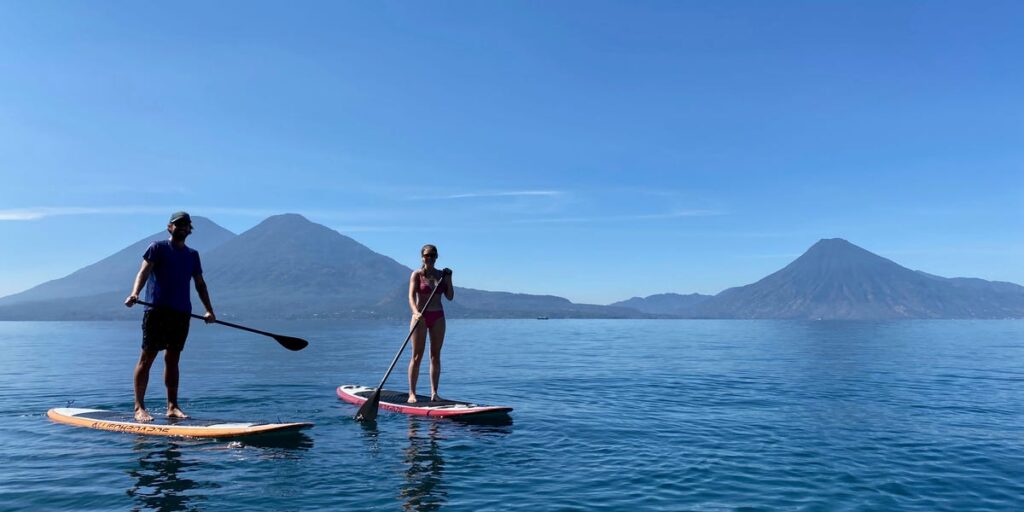- I spent 17 months traveling with my partner while trying to stick to a budget of about $50 a day.
- My budget kept me on track for the first three months, in part because Peru felt affordable.
- I definitely spent more in countries known for being expensive to visit, like Japan and Singapore.
After saving up for years, my partner and I spent 17 months traveling around the world.
We started our trip in Peru and traveled north to Mexico before heading to Asia.
Since my partner is an accountant, we thought it would be useful to track every expense along the way. My initial budget was $1,500 a month or roughly $50 a day. He had the same budget, but we kept our money separate.
Here’s what it was like exploring multiple countries while trying to manage my spending.
I stayed under budget for only the first 3 months of the trip
We spent the first two months in Peru, where I spent $1,370.29 in July and $1,179.96 in August.
Of all the countries we visited, I found Peru had some of the lowest prices for things like food and accommodations.
Our real key to staying under budget the first few months, though, was traveling at a slow pace. We took long bus journeys instead of quick, pricey flights and got deals on accommodations for staying longer. We also frequently cooked for ourselves and didn’t book any expensive tours or activities.
I also stayed under budget in September, which we spent in Peru, Ecuador, and Colombia. I spent $1,325.07, with a daily average of $33.35 in Peru and $45.60 in Ecuador.
Colombia was more expensive for me at an average of $57 a day, but we spent only a few days there at the end of the month.
I didn’t stay under budget any other months, but some countries still felt affordable to me
While exploring Central America, I didn’t go over my monthly budget of $1,500 by too much. One month I spent $1,646, and another $1,888.
My daily spend was below $50 in El Salvador ($38.70) and Costa Rica ($33.09).
To be fair, though, my Costa Rica budget is skewed because my parents visited and paid for our accommodation for 10 days as our joint Christmas and birthday presents. Without their gift, I would’ve spent way more.
I thought El Salvador, on the other hand, felt extremely affordable, but I spent only 12 days there. I wish I’d stayed longer — both for my wallet and because I enjoyed the people, scenery, and food (pupusas forever!).
I also went over my daily budget — but only slightly — while visiting Colombia ($57), Honduras ($58.41), Nicaragua ($53.43), Guatemala ($62.72), and Vietnam ($54.23).
Looking back, I think I could’ve stayed under budget in those places if I’d tried harder or reorganized my itinerary.
Cutting out pricey experiences like the motorbiking trip in Vietnam or the overnight volcano hike in Guatemala would’ve lowered my expenses — but those felt like once-in-a-lifetime opportunities I couldn’t pass up.
I also could’ve saved a significant amount by booking cheaper accommodations like hostel dorms, but the longer we traveled the more we opted for more comfortable (often pricier) stays like Airbnbs or private hostel rooms.
Splitting accomodation costs between the two of us helped — I couldn’t have justified the upgrades as a solo traveler — but we rarely chose the cheapest options.
Some countries surprised me by how expensive they felt
In March, I spent $3,076.75 across Belize and Mexico — double my monthly budget.
I splurged on some experiences, like a snorkel tour in Belize and a mezcal tasting in Oaxaca, but the average prices for just about everything were higher than I expected.
Though I overspent, I still refrained from certain activities, like a $125 cave tour in Belize, because I wanted to try to stay close to my budget. Looking back, I wish I’d just spent the money.
In Indonesia, I spent $109.96 a day, which might seem high for a country that has a reputation for affordability, though I spent five days on its island of Sumatra on orangutan trekking tours.
My flights, transport, and tours were expensive for that short amount of time, but it was one of my most memorable experiences.
I knew in advance that my budget would be too tight for some countries
Before I left, I knew I’d likely exceed my budget in some countries that are known for being expensive to visit.
My average daily spend in Panama was $98.38. My food and accommodations there were on the pricey side, and I also splurged on a five-day sailboat trip from Colombia to get there. (The alternative was an equally expensive flight, which was how I justified it.)
I also knew Singapore would be expensive, so I limited myself to six days there across two separate layovers. I stayed in hostel dorms or used credit-card points for hotels and mostly did free activities. My spending in Singapore still came out to $95.74 a day.
Finally, the most expensive country I visited was also my favorite: Japan. I spent an average of $121.79 a day, or $3,288.28 across 27 days — aka more than double my monthly budget.
Though I dipped more into my savings than I’d have liked, budgeting made this travel dream possible
Traveling for this long was incredible, and it wouldn’t have been possible without my budget. Daily and monthly spending goals helped me keep my spending in check.
Setting a conservative budget, having savings separate from the money I’d set aside for this trip, and earning some cash along the way meant I didn’t stress too much when I went over budget.
Looking back, I could’ve rearranged my itinerary to spend more time in countries where I spent less, but ultimately I don’t have any significant regrets.
In fact, my advice would be to splurge on bucket-list activities (within reason) — I’ll never forget seeing wild orangutans in Indonesia or learning to make sushi in Japan.
Money can come back, but memories are forever.
Read the full article here
















